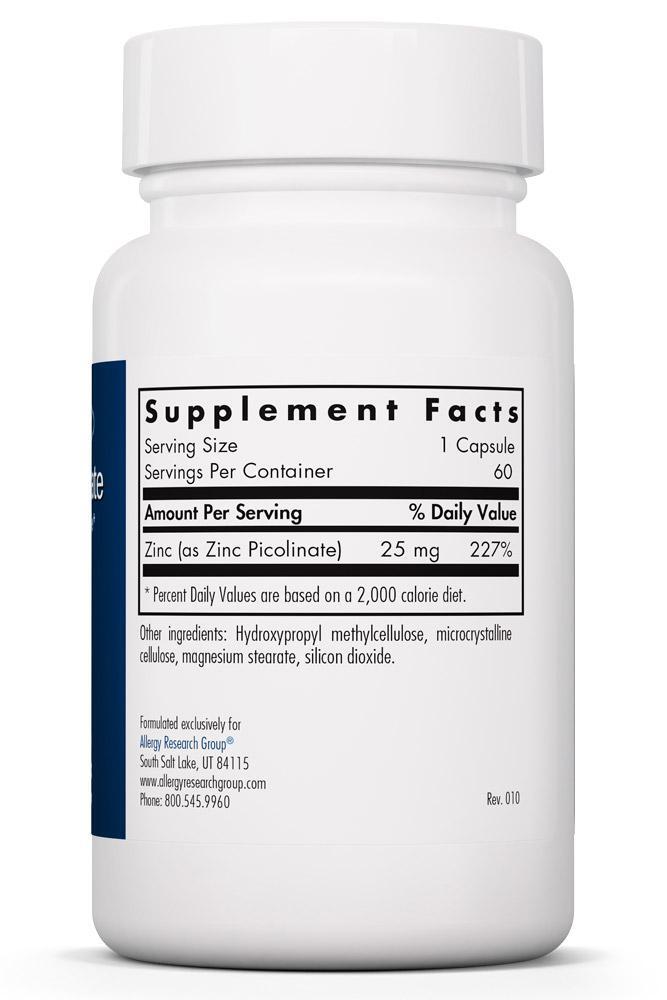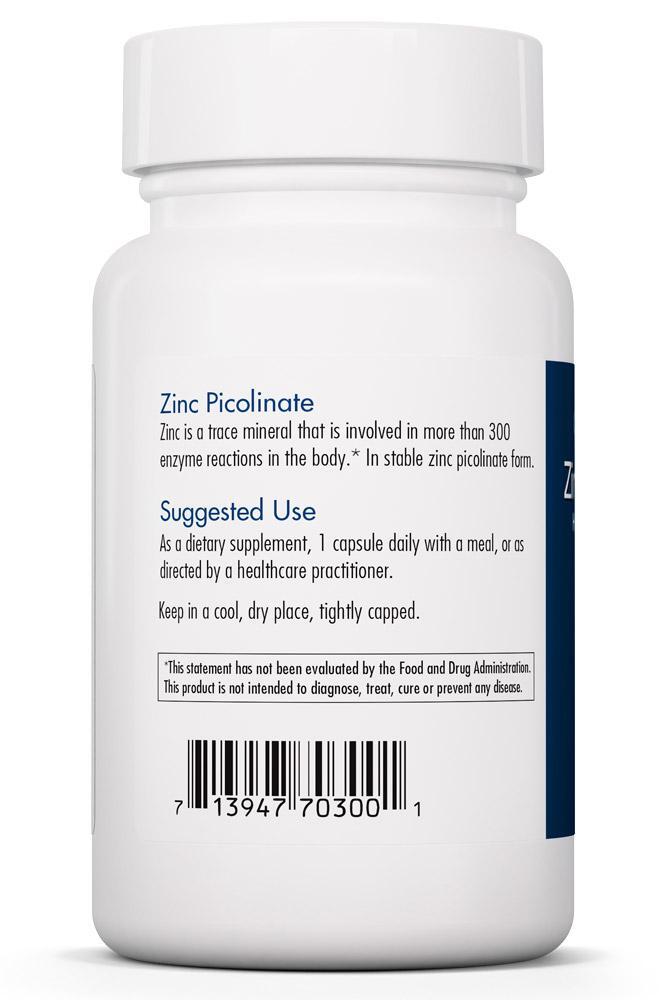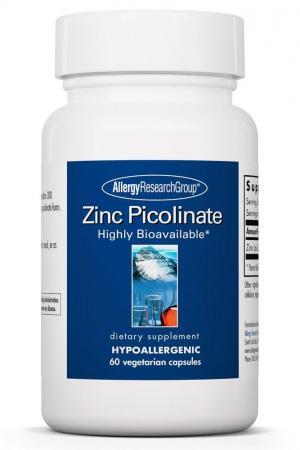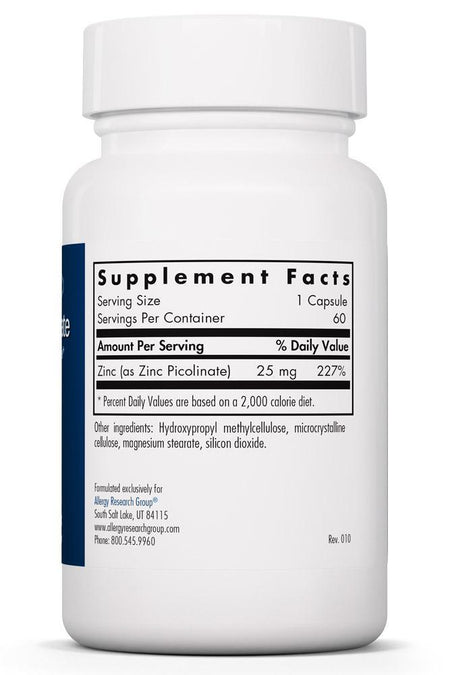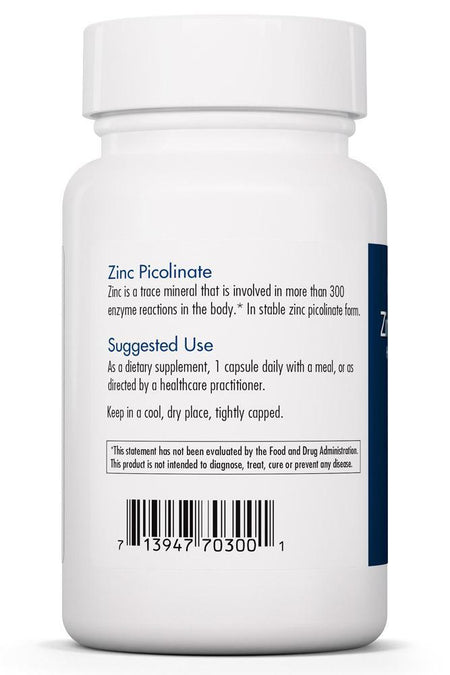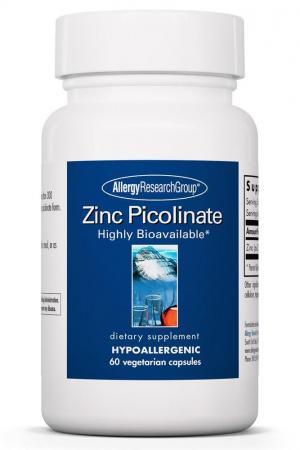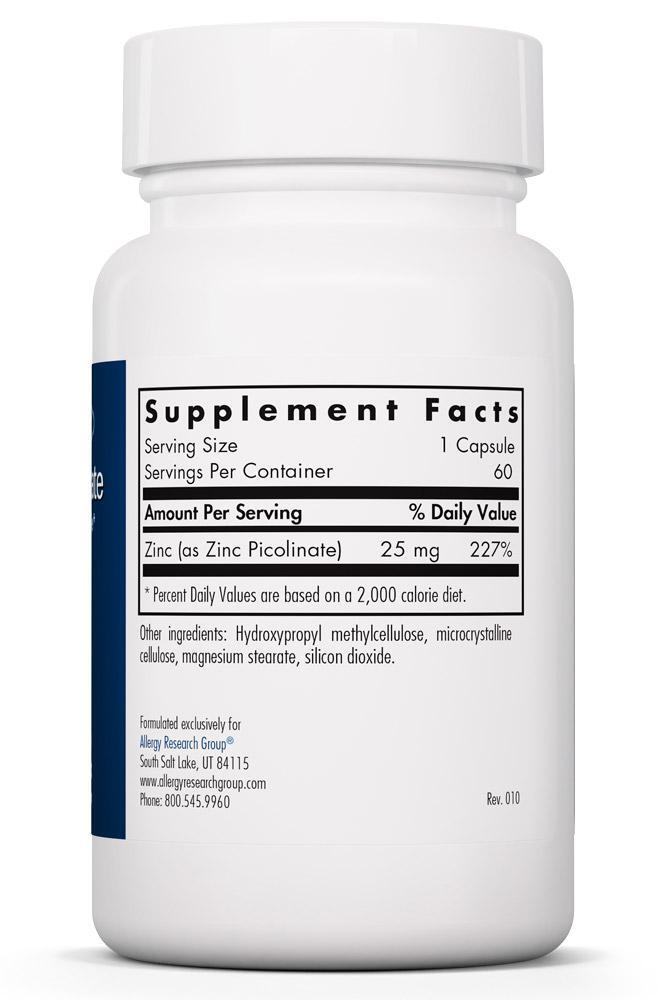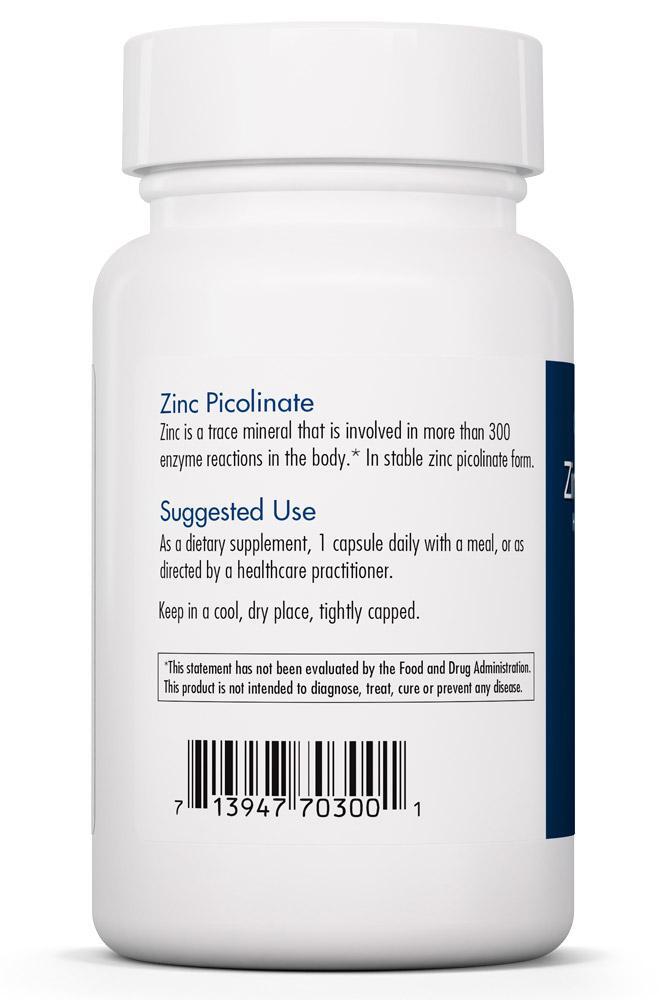🚛 Free Shipping Over $50
Zinc Picolinate 25 mg 60 Vegetarian Caps Allergy Research Group
Couldn't load pickup availability
Highly Bioavailable
Product Description
Zinc Picolinate provides 25 mg of elemental zinc per capsule of highly bioavailable zinc to support immune resilience, mental clarity, mood, and reproductive health.* This form of zinc has demonstrated superior absorption compared to other forms such as citrate and gluconate, making it ideal for individuals with increased needs or limited digestive capacity.
Superior Zinc Absorption for Optimal Immunity and Mental Clarity*
What It Does
Zinc Picolinate 25 mg delivers zinc in its most clinically absorbed form, shown to be superior to citrate and gluconate. This highly bioavailable format supports immune balance, emotional well-being, cognitive function, and reproductive health.*
How It Works
• Zinc picolinate has been shown to significantly outperform other zinc forms in absorption in human trials.*[13]
• Essential for immune surveillance, zinc helps modulate T-cell maturation, cytokine signaling, and oxidative stress.*[1-2]
• Supports mental health and cognition.*[3-6]
• Supports hormone production and fertility in both men and women.* [7-9]
• Vegetarians and others may benefit from the enhanced uptake of zinc picolinate.*[10][12]
Who It’s For
Ideal for individuals with increased zinc needs, reduced digestive capacity, or specific health goals related to mood, fertility, or immune strength.
Special Features
Zinc picolinate is the gold standard for absorption, clinically validated and optimized for maximum uptake.
References
1. Stiles LI, Ferrao K, Mehta KJ. Clin Exp Med. 2024;24(1):38. doi:10.1007/s10238-024-01302-6
2. Wessels I, Maywald M, Rink L. Nutrients. 2017;9(12):1286. doi:10.3390/nu9121286
3. Petrilli MA et al. Front Pharmacol. 2017;8:414. doi:10.3389/fphar.2017.00414
4. Ranjbar E et al. Nutr Neurosci. 2014;17(2):65–71. doi:10.1179/1476830513Y.0000000066
5. Sun R et al. Biomolecules. 2022;12(7):1000. doi:10.3390/biom12071000
6. de Vargas LDS et al. Nutrients. 2023;15(20):4396. doi:10.3390/nu15204396
7. Garner TB et al. Biol Reprod. 2021;104(5):976–994. doi:10.1093/biolre/ioab023
8. Prasad AS et al. Nutrition. 1996;12(5):344–348. doi:10.1016/s0899-9007(96)80058-x
9. Allouche-Fitoussi D, Breitbart H. Int J Mol Sci. 2020;21(20):7796. doi:10.3390/ijms21207796
10. Foster M et al. J Sci Food Agric. 2013;93(10):2362–2371. doi:10.1002/jsfa.6179
11. Wegmüller R et al. J Nutr. 2014;144(2):132–136. doi:10.3945/jn.113.181487
12. Santos H et al. Clin Nutr. 2020;39(5):1345–1353. doi:10.1016/j.clnu.2019.06.024
13. Barrie SA et al. Agents Actions. 1987;21:223–228. doi:10.1007/BF01974946


